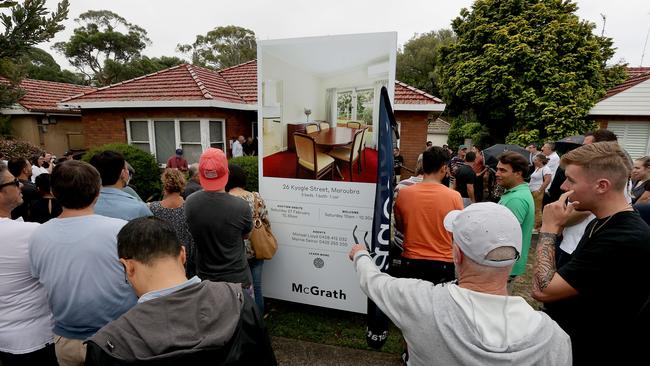House boom a global problem: RBA
With record low interest rates, housing demand across a number of global markets was buoyed during the pandemic.

Many economies have experienced sharp house price growth since mid-2020, given government measures to shore up household balance sheets and expectations that interest rates will remain very low for a prolonged period.
That’s the view of the Reserve Bank as it uses its biannual Financial Stability Review to address concerns about rampant house price growth in Australia, and points to other global markets with similar trends.
The central bank on Friday signalled that house price growth locally is being “watched closely” and cautioned that historically low interest rates and rising asset prices did create a risk of excessive borrowing.
The report said that with record low interest rates, housing demand across a number of global markets was buoyed by government policies in response to COVID-19 that supported household income and activity in the housing sector.
“Higher housing prices improve households’ balance sheets, increase economic activity (via the wealth effect and activity associated with building and selling housing) and mitigate near-term risks that banks will incur significant losses on mortgage lending,” the Financial Stability Review said.
“Increases in housing prices have been accompanied by stronger credit growth, resulting in rising household indebtedness, including in economies where household debt was already high such as Canada, New Zealand and Sweden.”
The RBA noted that house prices in recent months were tracking at annualised growth of 5 per cent in Britain, 15 per cent in Norway, 20 per cent in Sweden and the US, 30 per cent in Canada, and a whopping 40 per cent in New Zealand.
Domestically, CoreLogic’s national house price index rose 2.8 per cent in March, the fastest pace since 1988 — to be up 5.4 per cent in the first three months of the year.
The RBA is monitoring developments locally and in global markets as they also recover from the COVID-19 economic turmoil of 2020.
The central bank warned that any decline in lending standards would “accentuate risks” to financial stability from a drop in housing prices and household income.
There is, however, no sign of that yet in Australia.
Last month, Australian Prudential Regulation Authority chairman Wayne Byres said the regulator was closely monitoring risk-taking in the banking industry, but were no signs of stark near-term issues in lending standards. “There does not seem cause for immediate alarm. Nor, though, for complacency,” he said.
Regulators in New Zealand have already imposed a string of measures to cool its hot property market, including reinstating loan-to-value ratio restrictions.
From May, those restrictions will become even tougher, with no more than 5 per cent of banks’ new mortgage lending to investors to be written with deposits of less than 40 per cent of the property’s purchase price.
The RBA’s Financial Stability Review also highlighted that authorities in South Korea had outlined measures to increase housing supply, a topic that has been a fierce topic of debate in this market.
The new measures included building 1.5 million properties over the next four years, allowing housing to be built on government property and relaxing building height limits. Westpac chief Peter King last month identified the lack of housing supply as a major problem for the nation along with climbing property prices, saying affordability for those looking to break into the market was a “big issue” for policymakers.
Supply shortages in the market were exacerbating house price growth, he said.
“One of the ratios we look at quite a lot is new listings to sales and it’s still out of whack (more sales than new listings),” Mr King said.
The Financial Stability Review noted that in Canada the government intended to implement a nationwide tax on foreign property purchases and said the Bank of Canada’s governor had said there were preliminary signs of “excess exuberance”.
The RBA’s report also highlighted “long-running vulnerabilities” in China’s financial system that authorities were seeking to address. Those included high corporate debt and an undercapitalised shadow banking system.





To join the conversation, please log in. Don't have an account? Register
Join the conversation, you are commenting as Logout